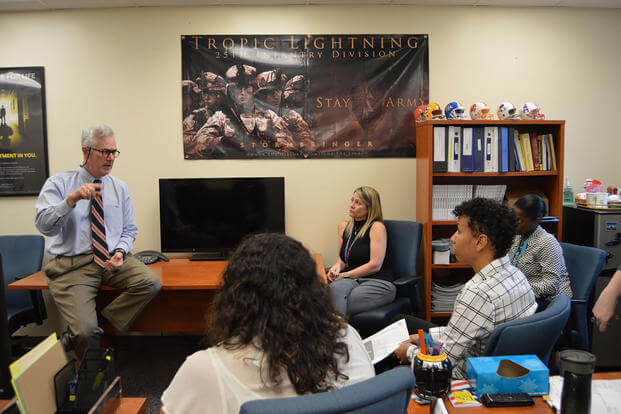The Pentagon's Transition Assistance Program (TAP) is divided into several stages and class days. Troops, including members of the Coast Guard, attend these separate courses in different stages, starting in most cases no later than 365 days before leaving the military.
The first two stages, initial counseling and the pre-separation briefing, set the stage for what to expect during the transition program and help you build a plan for getting where you want to go. The third stage is actually a series of briefings from multiple agencies -- the Defense Department (DoD), the Department of Veterans Affairs (VA) and the Department of Labor (DoL).
During DoD Transition Day, you'll learn how to shift your life from the military to the civilian world. This day focuses on three separate components: resiliency training, a class on understanding how your military occupational specialty (MOS) can translate to the civilian world, and a class on financial literacy. These components aren't just things that are good to know; learning them is required by law as part of your transition.
The VA briefing is designed to tell you everything you need to know about applying for, receiving and using your VA health and disability benefits. At this class, a VA expert will walk you through the complicated VA system and help you get started. This class was previously multiple days long, but in late 2019, a new transition program boiled it down to just one day.
The DoL briefing is also designed to give you a picture of the benefits available to you through that agency while helping you learn how to find a job after service. The DoL information doesn't just cover how to hunt for a job or write a resume. This session will tell you about where you can move to best find a job and what the cost of living is there; connect you with job fairs; help you prepare for those events; and familiarize you with apprenticeship and other free job resources.
Unlike the rest of the transition program, the DoL briefing is optional if you are retiring from the military after 20 years, have enrolled in school, can certify that you've already secured a job, or you are enrolled in a different transition-focused employment program.
Learn more about the other TAP steps:
Step 1: Initial Counseling
Step 2: Pre-Separation Briefing
Step 4: Specialized Military Transition Tracks
Step 5: Transition Assistance Program Capstone
Find the Right Veteran Job
Whether you want to polish your resume, find veteran job fairs in your area or connect with employers looking to hire veterans, Military.com can help. Sign up for a free Military.com membership to have job postings, guides and advice, and more delivered directly to your inbox.















